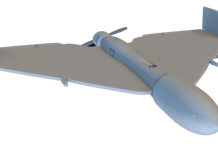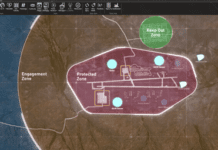This post is also available in:
 עברית (Hebrew)
עברית (Hebrew)
A new technology under development will ultimately detect distant enemy rockets and artillery fire, providing early warning — and potentially saving lives. A team from the Florida Institute of Technology and the University of Florida are working on sensors that detect infrasound, which is not audible to the human ear. Military officials hope U.S. troops can use infrasound sensors to detect Infrasound ranges below 20 hertz. Infrasound is produced by natural events like surf, hurricanes, tornadoes, volcanoes and tsunamis, as well as man-made sources like vehicle engines, airplanes and air conditioners.
“Ultimately, it will be on the battlefield. Our combat troops would have a portable sensor array with these special microphones, listening for these kinds of frequencies,” said Adrian Peter, director of Florida Tech’s Information Characterization & Exploitation (ICE) Lab.
A pair of US federal grants totaling $1.1 million is funding Florida Tech research using the infrasound array: A $600,000 grant from the Defense Intelligence Agency to analyze battlefield threats within tactical range, or about 60 miles; and a $506,806 grant from the Air Force Research Laboratory to classify infrasound signatures captured on cell phones.
“The ultimate goal is, hopefully, we will receive follow-on work and the technology is transferred into something operational — either in a military or commercial context,” Peter said.
Although infrasound sensors have been around for years, the key is developing artificial intelligence to quickly analyze the data. The researchers propose machine-learning techniques to figure out what events are causing these waveforms
The researchers are developing algorithms to interpret the infrasound data. System prototypes and reports are due to the Air Force Research Laboratory by May 2020 and the Defense Intelligence Agency by June 2020.
The experimental sensors sit on a grassy slope at the Florida ‘s River’s Edge campus, listening to rocket launches from Cape Canaveral Air Force Station about 50 miles to the north. The sensors were installed last fall, under a joint research agreement with the Air Force Technical Applications Center. AFTAC is a classified facility at Patrick Air Force Base that watches the globe for nuclear explosions, monitoring compliance with international treaties.
“How do we make that thing understand that there was a rocket launch at the Cape? And know what rocket it was? Was it a Delta rocket? Or one of the SpaceX rockets? That’s the goal,” said Anthony Smith, assistant professor of computer engineering and sciences.


























